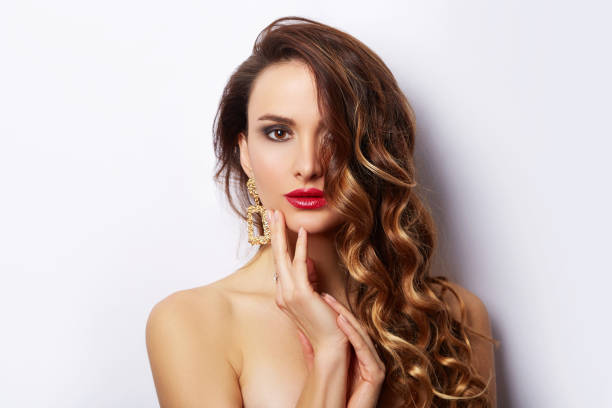Are you tired of your same old hair color? Do you want to add some depth and dimension to your locks? Then highlights may be the perfect solution for you. But with so many different types, how do you know which one to choose? So, scroll down and check out how to choose between partial highlights vs full highlights. Keep reading!
What Are Partial Highlights?
Partial highlights are exactly what they sound like – highlights that only cover a portion of your hair. Typically, they are applied around the face or on the top layer of hair, creating a subtle, natural effect.
Partial highlights are ideal for those who want a low-maintenance, natural look. They require less upkeep than full highlights, since they don’t cover as much hair. And because they’re focused on certain areas, they can help draw attention to your best features.
What Are Full Highlights?
Full highlights, on the other hand, cover your entire head of hair. They typically involve weaving small sections of hair and applying color throughout, creating a brighter, more dramatic effect.
Full highlights are perfect for those who want a bolder, statement-making look. They can add depth and dimension to all of your hair, making it appear fuller and thicker. However, because they cover more hair, they can also require more upkeep and upkeep costs.
Partial Highlights vs Full Highlights
- Maintenance: Partial highlights require less upkeep than full highlights, since they don’t cover as much hair. However, both types will require regular salon visits to maintain the color and prevent any damage.
- Cost: Because full highlights cover more hair, they can be more costly than partial highlights. But, the cost will also depend on your stylist’s rates and the complexity of the coloring process.
- Effect: Partial highlights create a subtle, natural effect, while full highlights create a bolder, more dramatic effect. The effect you want will depend on your personal style and preferences.
- Hair type: Both partial and full highlights can work for any hair type, but some may be better suited to one or the other. For example, if you have fine or thin hair, partial highlights can help add dimension without weighing down your locks.
If you’re mindful of your budget, a smart strategy is to alternate between full and partial highlight appointments. This approach can be more cost-effective because the highlights applied at the back of your head tend to experience slower growth compared to those on the top. You might opt for a full highlight session once or twice a year and rely on partial highlights, occasionally adding a face frame for variation, to maintain a fabulous and dynamic hair color. This way, you can save both time and money without compromising on the quality of your color, ensuring you never get stuck in a hair color rut.
How to Choose Between Partial Highlights vs Full Highlights
- If you’re looking for a low-maintenance option, partial highlights may be a better choice. But if you’re willing to put in the time and effort for bold, statement-making locks, full highlights could be perfect for you.
- Your skin tone can play a big role in determining which type of highlights will look best on you. Those with warmer skin tones may want to opt for golden, honey-toned highlights, while cooler-toned individuals may prefer ashy or platinum highlights.
- Your stylist will be able to help you determine which type of highlights will work best for your hair type and personal style. They can also recommend the best upkeep routine to keep your locks looking their best.
A good example of partial highlights would be if you have a bob haircut and want to add some dimension to your side-swept bangs. Adding some subtle highlights around your face could create a beautiful, natural-looking effect without being too overwhelming.
On the other hand, if you have long, straight hair and want to add some depth and texture, full highlights might be a better choice. By weaving color throughout your hair from root to tip, you can create a brighter, more voluminous look that will make a statement.
FAQs
- Will highlights damage my hair? When done correctly, highlighting should not cause significant damage to your hair. However, it’s important to choose a reputable salon and stylist who will use high-quality products and minimize any potential damage.
- Can I still get highlights if my hair is colored? Yes, highlights can be applied over previously colored hair. However, your stylist may need to adjust the color formula to achieve the desired effect.
- How often do I need to touch up my highlights? This will depend on your hair type and the rate at which it grows. Generally, partial highlights can be touched up every 6-8 weeks, while full highlights may require more frequent touch-ups (around every 4-6 weeks).
- Are highlights suitable for all hair types? Yes, highlights can work for all hair types. However, the type of highlights and the specific coloring technique used may vary depending on your hair texture and thickness.
- Can I switch between partial and full highlights? Absolutely! Switching between partial and full highlights is a great way to change up your look. Just keep in mind that full highlights may require more upkeep and cost more than partial highlights.
Final Takeaway
When it comes to choosing between partial highlights vs full highlights, there’s no right or wrong answer. It all depends on your personal style, hair type, and budget. Partial highlights are ideal for those who want a low-maintenance, natural look, while full highlights are perfect for those who want a bolder, statement-making effect. By considering the factors we’ve outlined above and consulting with your stylist, you can make an informed decision about which type of highlights is right for you.







